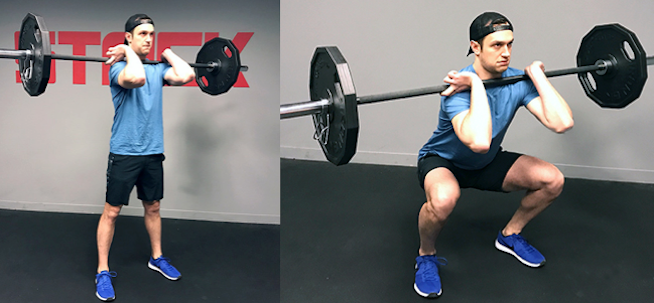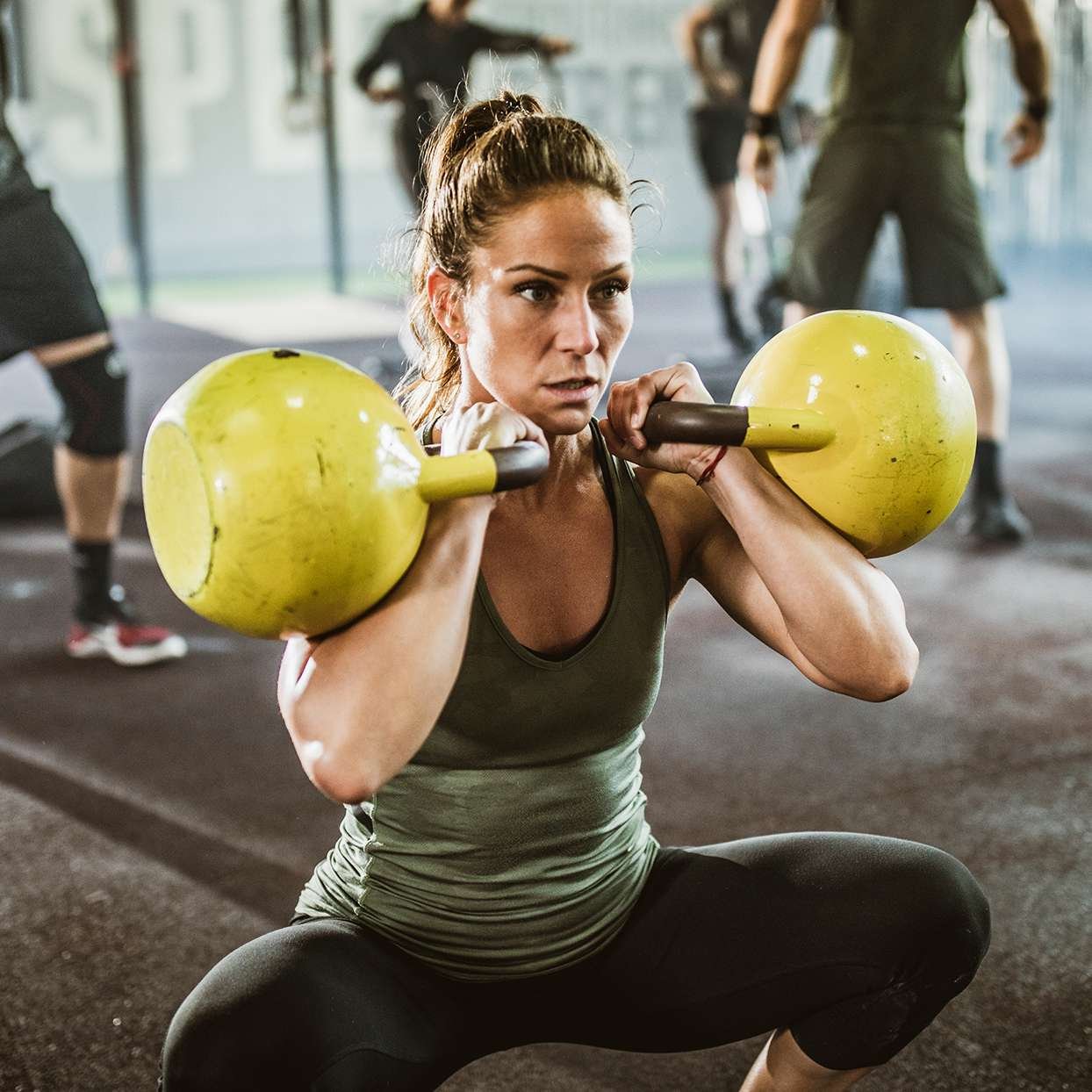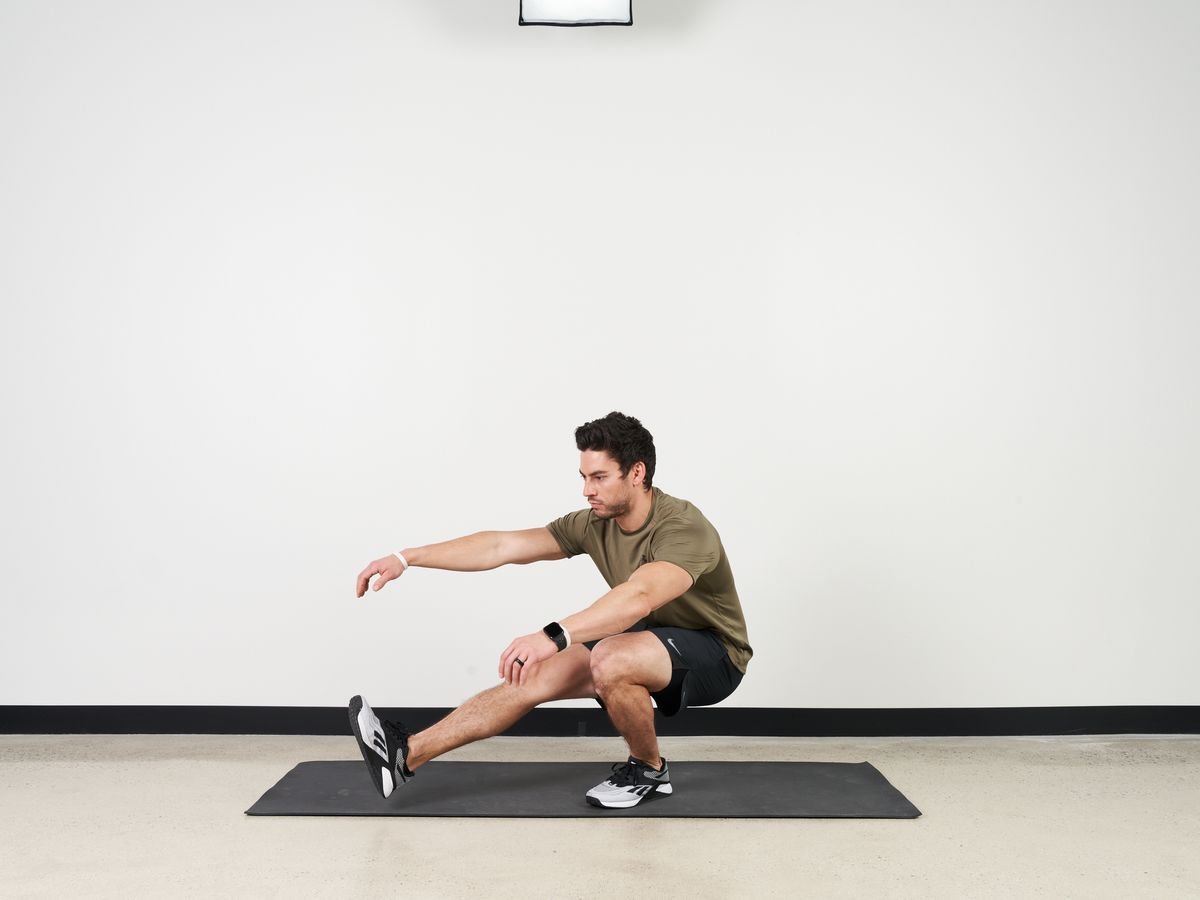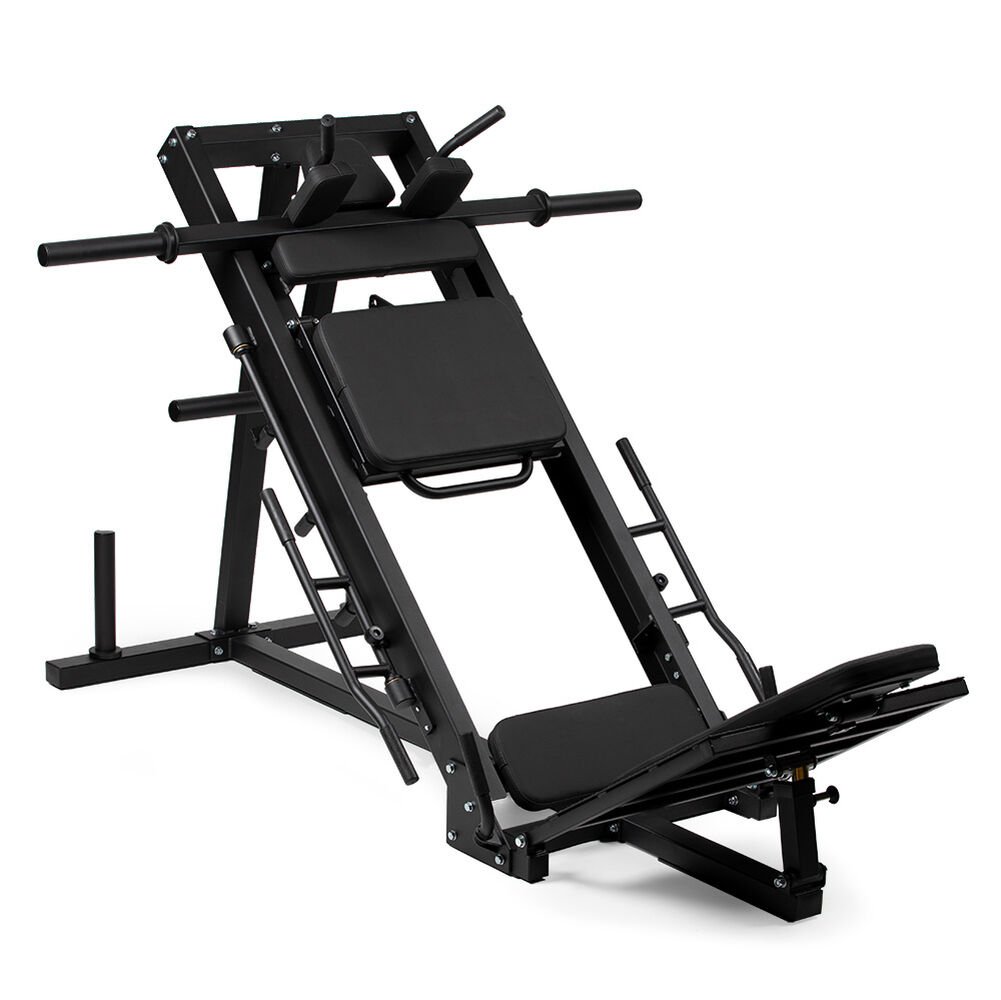The front squat is a weightlifting exercise that targets the quadriceps. It involves holding a barbell in front of the shoulders while squatting.
The front squat stands as a highly effective compound movement, engaging the anterior chain of the body including the quads, glutes, and core. Unlike the traditional back squat, this variant emphasizes the front part of the body, demanding balance and upper body strength to maintain the barbell’s position.
This exercise not only improves leg muscle mass and strength but also enhances flexibility and posture. It’s a staple in Olympic weightlifting routines and CrossFit workouts, benefiting athletes who seek functional fitness. The front squat can be integrated into various training programs, providing a challenging alternative to other squat variations and contributing to a well-rounded strength-training regimen.

Credit: gunsmithfitness.com
Anatomy Of The Perfect Front Squat
The front squat, a powerhouse movement, sculpts your lower body and core. Like a masterful sculpture, it requires precision. From grip to stance, each element shapes your success. Mastering the front squat takes understanding its anatomy. Let’s dissect the perfect front squat to unveil its strength-building secrets.
Gripping Techniques: Clean Grip Vs. Cross-arm
Your grip lays the foundation for a solid front squat. Two popular techniques are the clean grip and the cross-arm grip.
| Clean Grip | Cross-Arm Grip |
|---|---|
|
|
Foot Placement And Stance Variations
Foot placement is crucial for balance and power. Here, personal comfort and body mechanics come into play.
- Feet shoulder-width apart
- Toes slightly pointed out
- Even weight distribution
Stance variations target different muscles. A narrower stance focuses on the quads, while a wider stance activates the glutes and hamstrings.
The Role Of The Back And Core In Stability
A strong back and core work as a pillar of stability in the front squat. They maintain an upright torso and protect your spine.
- Engage the back muscles to keep the chest up
- Brace the core throughout the movement
- Focus on a neutral spine alignment
Preparation Essentials For Front Squats
Front squats are an effective exercise for building lower body strength. Proper preparation is key to maximizing their benefits. Preparation Essentials for Front Squats can ensure a successful and safe workout. Let’s dive into how to get ready for your front squat session.
Mobility Drills For Shoulder And Wrist Flexibility
Shoulder and wrist flexibility are pivotal for front squats. Tightness can lead to discomfort and poor form. Incorporate these drills for better flexibility:
- Wrist stretches: Extend your arm. Bend your wrist back with your other hand. Hold for 15 seconds.
- Front rack stretch: Place your hands shoulder-width apart on a bar. Push your chest through to stretch your shoulders.
Warming Up: Activating The Right Muscle Groups
Activating the right muscles loosens them up for front squats. Warm up with these exercises:
- Air squats: Perform 10-15 reps to activate your quads and glutes.
- Glute bridges: Do 10 reps to engage the posterior chain.
Equipment Considerations: Shoes And Belts
The right gear can enhance your front squat performance. Take note of these essentials:
| Equipment | Purpose | Benefits |
|---|---|---|
| Shoes | Stability and support | A solid base for force transfer |
| Belts | Midsection support | Better posture and core activation |
Executing The Front Squat: A Step-by-step Guide
The front squat is a stellar exercise for building lower-body strength and flexibility. It targets the quads, glutes, and core. Let’s jump into the proper technique!
Descent Dynamics: Breathing And Depth
As you begin the descent, breathe in deeply and hold it to create intra-abdominal pressure. This will keep your core tight. Keep your elbows high and point them forward to ensure the bar stays secure. Now, lower your hips back and down, aiming for a depth where your thighs are at least parallel to the floor.
- Breathe in before you lower down.
- Keep elbows high to secure the bar.
- Descend until thighs are parallel or lower.
Ascent Techniques: Driving Through The Heels
After reaching the desired depth, prepare to ascend by driving through the heels. Your chest should remain upright and elbows high. Push the floor away as if you’re splitting the ground.
- Initiate the rise by pressing your heels into the ground.
- Keep your chest up throughout the movement.
- Imagine splitting the ground to engage your quads and glutes efficiently.
Common Mistakes To Avoid For Injury Prevention
Prevent injury by avoiding some common mistakes like allowing your knees to cave in. Do not round your back; keep it neutral. Always avoid rushing through the reps.
| Mistake | Impact |
|---|---|
| Knees caving in | Increased risk of knee injuries |
| Rounded back | Can lead to back injuries |
| Rushing reps | Less control, higher injury risk |
Keep these steps and tips in mind to safely enjoy the benefits of the front squat. Dedication and proper form yield the best results!

Credit: www.stack.com
Strength Training Synergy
Front squats are a power move for whole-body strength. This exercise doesn’t just work your legs. It engages your core, back, and shoulders too. It’s all about teamwork in your muscles.
Complementary Exercises For A Balanced Workout
Pairing exercises smartly boosts strength and balance. Front squats are the stars. But fans need the right support cast.
- Deadlifts: Target back and hip power.
- Bench Press: Boost upper body strength.
- Pull-ups: Shape a strong back and arms.
- Planks: Build a rock-solid core.
Incorporating Front Squats Into Your Routine
Front squats fit perfectly into many workouts. Start with light weights. Focus on form first. Twice a week is a good start. Mix them with other exercises.
| Day | Workout |
|---|---|
| Monday | Front Squats + Pull-ups + Planks |
| Thursday | Front Squats + Deadlifts + Bench Press |
Periodization: Timing Your Strength Gains
Planning is key. Change your sets, reps, and weight over time. This will help muscles grow.
- Weeks 1-4: Lighter weights, learn the move.
- Weeks 5-8: Add weight, build endurance.
- Weeks 9-12: Max weight, fewer reps, gain strength.
Set goals. Follow your plan. Watch strength shoot up.
Advancing Your Squat: Progressions And Challenges
Fine-tuning the front squat opens doors to immense strength gains. Progressing in this lift requires a solid strategy. Learning to increase weight, integrate complex movements, and overcome plateaus is essential.
Increasing Weight: When And How Much
Boosting the load on your front squat should be careful and strategic. Start by mastering the form with lighter weights. Once you can complete your sets without form breakdown, consider adding more weight. A good rule of thumb is to increase by 5-10% once you can comfortably perform 2-3 reps more than your target for two consecutive workouts.
- Check form consistency
- Add weight in small increments
- Ensure comfort with current weight
Complex Movements: Integrating Front Squats Into Olympic Lifts
Olympic lifts call for explosive power and precision. The front squat builds the necessary leg strength and stability. Incorporate it into complex movements like the clean and jerk or the snatch. This integration enhances the transfer of power from the legs to the barbell.
| Movement | Focus |
|---|---|
| Clean and Jerk | Front squat reinforces the ‘catch’ phase |
| Snatch | Front squat strengthens overhead stability |
Overcoming Plateaus With Accessory Work
Hit a standstill? Introduce accessory exercises. These target stabilizing muscles, improving overall squat performance. Include movements like lunges, step-ups, and single-leg squats. They help to correct imbalances and build supporting strength.
- Lunges
- Step-ups
- Single-leg squats

Credit: in.pinterest.com
Safety First: Injury Mitigation Strategies
The front squat is a powerful exercise to build lower body strength. But like any workout, safety comes first. To avoid injuries, use proper techniques and pay attention to your body. Here’s how:
Spotting And Self-spotting Techniques
Spotting helps prevent injury when lifting heavier weights. Here are two ways to ensure safety:
- With a Spotter: Make sure the spotter stands close. They should be ready to help if you can’t lift the weight.
- Self-Spotting: Set the safety bars on a squat rack at waist height. If you fail to lift, lower the bar safely onto the bars.
Recognizing Your Body’s Limitations
Understanding your limits is key to avoiding injury:
- Start Light: Begin with a weight you can handle comfortably.
- Gradual Increase: Slowly add more weight over time, not all at once.
- Listen to Pain: Stop if you feel sharp or persistent pain.
Recovery And Self-care For Long-term Progress
Rest and recovery are as important as the exercise itself:
| Activity | Benefit |
|---|---|
| Proper Sleep | Muscle Repair |
| Stretching | Flexibility |
| Hydration | Muscle Function |
Include these in your routine to maintain performance and prevent injuries.
Frequently Asked Questions For Front Squat
What Does The Front Squat Work?
The front squat primarily targets the quadriceps. It also strengthens the glutes, hamstrings, and core.
Why Is Front Squat So Much Harder?
Front squats are typically harder because they require greater core stability and flexibility, especially in the wrists and upper back, to maintain the bar’s position. This stricter posture demands more from the quads, translating to increased difficulty.
Are Front Or Back Squats Better?
Front squats target the quads and upper back, enhance core strength and posture. Back squats engage more of the posterior chain, such as the glutes and hamstrings. The choice depends on your fitness goals and individual biomechanics. Both variations have unique benefits for overall strength.
Why Front Squats Are Safer?
Front squats are safer because they encourage proper posture and require less spine load, reducing lower back strain. The upright position also helps maintain joint alignment, decreasing injury risk.
Conclusion
Mastering the front squat is a journey of enhanced fitness, strength, and overall athleticism. Embrace the challenge and appreciate the rewards that come with consistent practice. Elevate your workout routine by integrating this powerful exercise. Remember, dedication to proper form brings you closer to your health goals.
It’s time to squat your way to victory!


